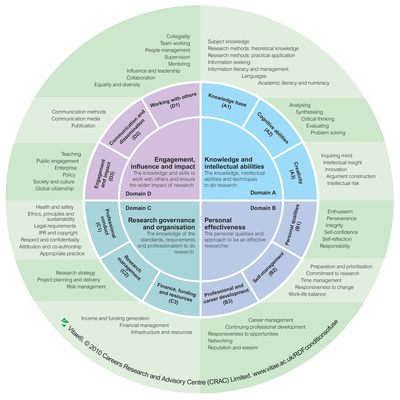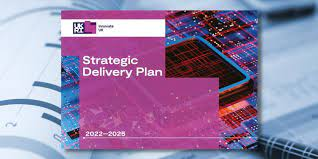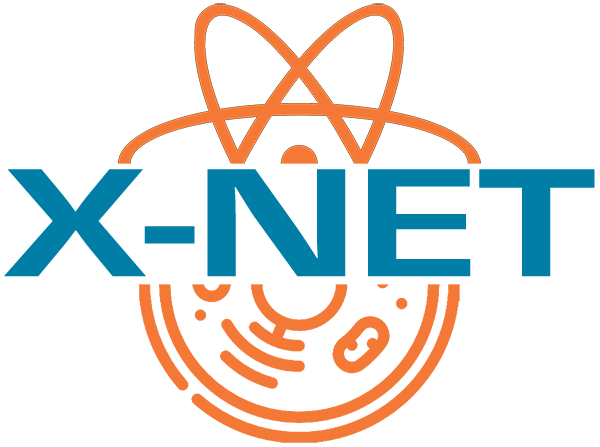The workshop was online, via Zoom, for 3h plus a 20 min break. It was split into two sections, the first focussed on understanding industry requirements and the skills gap, the second focussed on understanding the barriers to collaborations with academia.
Introductions
Understanding industry requirements and perspectives
What are the key skills or competencies required for the biomedical industry and recruitment preferences.
Understanding the skills gap
We created a Vitae Researcher Development Framework (RDF) (Vitae, 2010) to compare what skills researchers typically develop, and what skills or competencies industry requires (see activities below).
Understanding barriers to collaborations
How is the UKRI supporting industry-academia interdisciplinary collaborations in biomedicine and how to strengthen links and promote interdisciplinary industry-academia collaborations. We explored the main barriers (if any) to interdisciplinary industry-academia collaborations and how interdisciplinary research can help answer future industry-related grand challenges.


The RDF is a framework which provides key knowledge, behaviours and attributes that are developed or acquired through, or used in, the broader contexts of being a researcher. These can be used to map core competencies required in industry onto research skills, and highlight where these are missing or could be improved. This can also then help researchers prepare for transition into industry.

X-Net invited Prof Rory Duncan (Pro Vice-Chancellor, Research and Innovation, Sheffield Hallam University) to talk on:
- How is the UKRI supporting industry-academia interdisciplinary collaborations, particularly in biomedicine?
- What is the role of interdisciplinarity in innovation?
- What are the main barriers to industry-academia collaborations?

Breakout group activity: what the main barriers are and recommendations for how to lower barriers to interdisciplinary industry-academia collaboration.
This section addressed the following topics:
- Importance of industry-academia collaborations in an interdisciplinary environment
- How to promote industry-academia interdisciplinarycollaborations
- Barriers to interdisciplinary industry-academia collaborations
- Industry-related grand challenges and interdisciplinarity
The main aims of this workshop were:
- For X-Net, expanding our network to industry participants;
- For Industry Participants, (i) exploring how academia does, or does not, currently provide industry hires with sufficient interdisciplinary skills to perform roles in this sector, and (ii) via X-Net’s future Roadmap, influencing UKRI’s future training strategy.
Understanding industry requirements and the skills gap
- What are the key skills required for industry?
- Industry recruitment preferences
- What are the main interdisciplinary skills missing in new recruits?
- What are the interdisciplinary training requirements in academia for future industry hires?
- Should academic training curricula be adapted to account for newly emerging technologies?
Understanding barriers to collaboration
- How does industry work with academia? Are these partnerships more important in an interdisciplinary environment?
- How to strengthen links and promote industry-academia collaborations that are interdisciplinary?
- What are the main barriers (if any) to interdisciplinary industry-academia collaborations?
- Can interdisciplinary research help answer future industry-related grand challenges?


